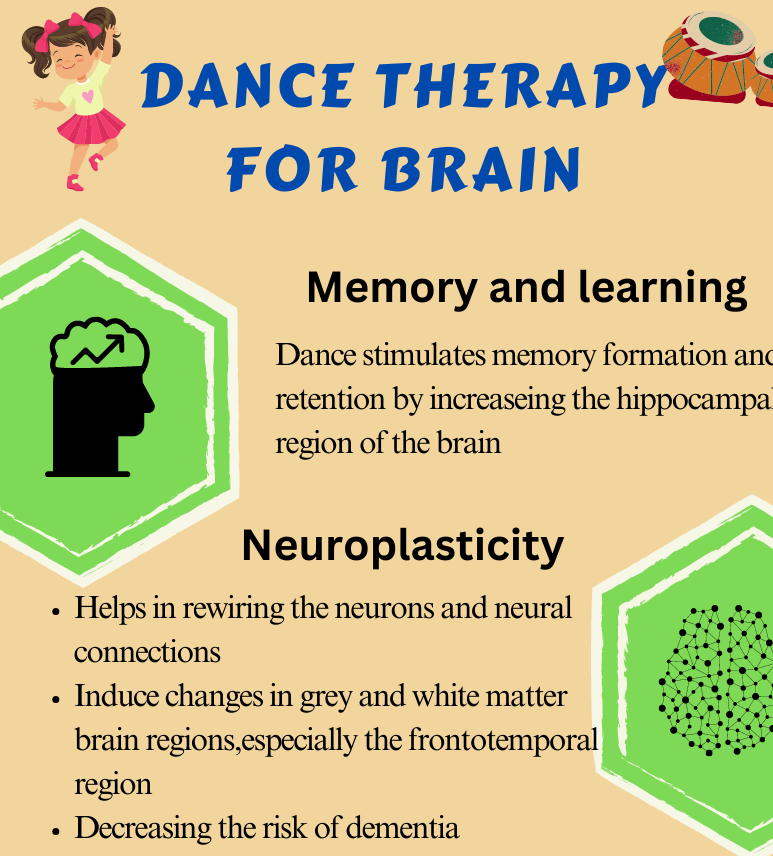
Enjoyed both by performers and spectators, dance is a performance art that spreads joy. When the movements, steps, mudras and, more importantly, approach are tweaked a little, dance can become effective for the physical and cognitive development of differently abled children, especially of those with autism.
Autism limits verbal communication, expression and social abilities of children. Dance therapy can bridge that communications gap and provide children with autism a means to overcome limitations, say experts.
Dance vs dance therapy
Though both dance and dance therapy involve movement to a rhythm or music, they are quite different.
“Dance is essentially a stylised and choreographic presentation of movements based on music and rhythm. In dance, you express your mind and entertain the audience at the same time.,” says Dr Aditi Bandyopadhyay from Kolkata, a medical faculty at West Bengal University of Health Sciences, Kolkata.
“Dance and movement therapy deals more with spontaneous movements and expression of the body through movements. It must be kept in mind that here one is not trying to instruct anybody but is basically facilitating the person towards improvement or overcoming whatever challenges they are facing.”
Dance therapy bridges communication gap
Autism affects brain development among children, which in turn impacts how they socialise and communicate. This is where dance as a therapy can make a difference.
“Dance can be a powerful tool of communication and expression for children with autism,” says Nupur Sarkar, a classical dancer from Kolkata. “Many children with autism have difficulty with verbal communication and social interaction but may have a natural inclination towards movement and rhythm. It can help them develop body awareness, improve coordination and increase social interaction and communication.”
Through dance, children with autism can express themselves in a non-verbal way, connect with others and build confidence and self-esteem.
“People with autism have a difficult time in adjusting to space, establishing eye contact and in communication,” adds Dr Bandyopadhyay, who is also director of the dance and movement therapy programme at SAMYA Foundation for Special Needs, Kolkata. “Dance and movement therapy helps in improving that.”
Benefits of dance therapy
Though dance therapy is considered a medical process, it encompasses and maintains the enjoyable elements of dancing. The therapy is conducted in a fun and engaging way that children love and enjoy. The following are its direct benefits for children with autism:
- Physical health: Children’s gross motor skills, balance and coordination improve. “It helps develop better body awareness and improves sensory integration as well,” says Sarkar, who teaches dance to children at the Civilian Welfare Foundation, a Kolkata-based NGO.
- Psychological well-being: Dance helps improve cognitive and perceptual skills such as attention, memory and spatial awareness.
- Emotional well-being: While performing dance movements, children’s mind is focused on the activity. This reduces their anxiety and stress levels. “Dance therapy improves their emotional regulation skills and reduces anxiety and stress,” says Sarkar. “It also helps [them] develop a greater sense of self-awareness and self-confidence.”
- Social skills: Communication and being in a social environment are among the biggest challenges for children with autism. “Dance therapy provides a structured and supportive environment for children to practise social skills and build relationships with others,” says Sarkar. “They learn to take turns, follow directions and work cooperatively with others.”
Dance therapy: awareness and acceptance
Many children with autism benefit from dance therapy. However, it requires more acceptance among parents and organisations which work with children with autism or special needs. Structured implementation is important too.
“By implementing dance therapy in different autism centres, more children with autism can have access to this effective and engaging therapeutic intervention,” says Sarkar. “It can also help increase awareness and acceptance of dance therapy as a valid form of treatment for autism.”
Of course, there will be challengers while engaging with children with autism.
“If you are putting an art-based intervention in some kind of therapy, you have to know and understand the technicalities behind the intervention, and also have to understand the disabilities themselves,” says Dr Bandyopadhyay. “Otherwise, it doesn’t help. Someone merely dancing or making an individual dance or swing to music does not make it dance and movement therapy. You must undergo a process of learning for that.”
Takeaways
- Dance therapy can be a powerful tool for communication and expression for children with autism.
- It provides several physical, psychological, emotional and social benefits.
- While engaging children with autism through dance therapy, it is crucial to make sure that they are enjoying, having fun and stay involved.


















